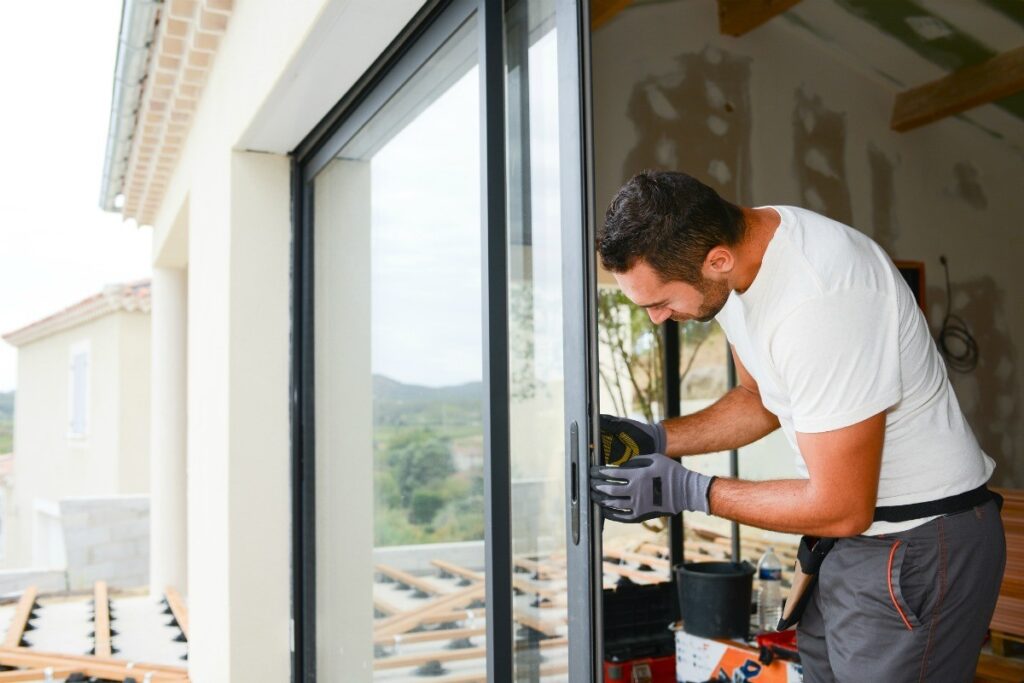When homeowners think about reducing energy costs and improving comfort, their focus often turns to insulation, windows, or HVAC systems. While all of these play a vital role, one aspect that often gets overlooked is door installation. Doors are more than just an entry or exit point—they’re critical components in maintaining energy efficiency within your home.
A poorly installed door can let in drafts, allow conditioned air to escape, and force your heating and cooling systems to work overtime. On the other hand, proper door installation helps create a tight, well-insulated seal that keeps your home comfortable year-round and reduces your energy bills.
In this article, we’ll explore why professional door installation is essential for energy efficiency, what factors influence performance, and how investing in quality installation can benefit both your wallet and the environment.
1. Why Doors Matter in Energy Efficiency
Every door in your home creates a barrier between indoor and outdoor environments. If the barrier isn’t installed correctly, air leaks occur, making it harder to regulate indoor temperatures. In fact, according to the U.S. Department of Energy, doors and windows can account for up to 25%–30% of residential energy loss.
Professional door installation ensures:
- Proper alignment within the frame.
- High-quality weatherstripping for air sealing.
- Correct insulation around the door perimeter.
When all these factors come together, your doors act as an energy-saving asset rather than a liability.
2. The Impact of Poor Door Installation
Improperly fitted or DIY-installed doors often lead to common issues that directly affect energy efficiency:
- Air Drafts: Gaps around the frame allow warm or cool air to escape.
- Uneven Gaps: Doors that don’t sit flush in the frame fail to create a tight seal.
- Warping or Sagging: Incorrect installation can cause stress on materials, leading to structural warping.
- Moisture Infiltration: Water seeping in during rain can reduce insulation effectiveness.
These problems don’t just waste energy—they also shorten the lifespan of your door and increase maintenance costs.
3. Proper Sealing and Weatherstripping
One of the key elements in energy-efficient door installation is sealing. A professional installer ensures that your door is fitted with high-quality weatherstripping, which reduces drafts and prevents conditioned air from escaping.
There are several types of weatherstripping materials, including:
- Foam tape (ideal for small gaps).
- Felt (budget-friendly, though less durable).
- V-strip or tension seal (flexible and long-lasting).
- Door sweeps (to block drafts at the bottom).
Choosing the right type and ensuring proper installation maximizes efficiency while maintaining smooth door operation.
4. Insulation Around the Door Frame
Even if your door itself is energy-efficient, heat loss can still occur around the frame if it isn’t insulated correctly. Professional installers use expanding foam or other insulation materials to fill small gaps between the frame and wall, creating a continuous thermal barrier.
Without this step, tiny cracks can allow both air and moisture to infiltrate, undermining your home’s comfort and efficiency.
5. Correct Door Alignment
A critical aspect of door installation is ensuring proper alignment. If the door isn’t level and square within the frame, it won’t seal properly when closed. This leads to:
- Visible light seeping in through gaps.
- Increased air leakage.
- Difficulty in locking the door securely.
Professional installers use precision tools like laser levels and shims to guarantee alignment, ensuring that the door closes snugly against its weatherstripping every time.
6. Energy-Efficient Door Materials
While installation plays the biggest role, choosing the right door material also influences performance. Common options include:
- Fiberglass doors: Excellent insulation, resistant to warping.
- Steel doors: Durable, with foam cores for energy efficiency.
- Wood doors: Beautiful but may require extra sealing against moisture and drafts.
- Glass doors (sliding or French): Must be double- or triple-glazed to maintain insulation.
A professional installer can recommend the best materials for your climate and ensure that they’re fitted for maximum efficiency.
7. The Role of Exterior Doors in HVAC Performance
Your heating and cooling system works hardest when conditioned air escapes your home. If your doors are leaking air due to poor installation, your HVAC unit will run more frequently and for longer periods, driving up energy bills.
Proper door installation supports your HVAC system by maintaining consistent indoor temperatures. As a result, you’ll enjoy:
- Lower monthly utility bills.
- Reduced wear on HVAC equipment.
- A smaller carbon footprint.
8. Noise Reduction Benefits
Energy-efficient doors also provide superior noise insulation. Proper door installation ensures that gaps are sealed, which not only keeps air in but also keeps unwanted sounds out. For homeowners living in busy neighborhoods or near highways, this dual benefit of comfort and peace is invaluable.
9. The Long-Term Cost Savings
While professional installation comes with an upfront cost, it pays for itself over time through lower utility bills, reduced maintenance, and increased door longevity. Consider the costs of poor installation:
- Higher heating and cooling expenses.
- Frequent repairs due to warping or misalignment.
- Shorter door lifespan, requiring earlier replacement.
By investing in professional door installation, you avoid these unnecessary expenses while enjoying ongoing savings.
10. Environmental Benefits
Beyond financial savings, energy-efficient door installation contributes to sustainability. Reduced energy use means fewer greenhouse gas emissions. For eco-conscious homeowners, this makes professional installation an important step toward a greener lifestyle.
11. Boosting Property Value
Today’s buyers are increasingly energy-conscious. Homes with properly installed, energy-efficient doors are more attractive in the real estate market. If you’re planning to sell your home in the future, investing in professional door installation can increase curb appeal, improve your property’s efficiency rating, and ultimately raise resale value.
12. Peace of Mind Through Professional Expertise
Finally, professional door installation provides peace of mind. You can be confident that your doors aren’t just aesthetically pleasing, but also functional and energy-efficient. Many installation companies even offer warranties, so you’re covered if issues arise later.
Final Thoughts
Doors play a much larger role in energy efficiency than most homeowners realize. From sealing out drafts to supporting your HVAC system, proper door installation is essential for maintaining comfort, reducing utility bills, and protecting the environment.
While DIY installation may seem tempting, the precision and expertise of professional installers ensure the job is done right the first time. By investing in skilled door installation, you’re not just upgrading your home—you’re creating a safer, more efficient, and more sustainable living environment.
If you’re looking for ways to cut energy costs and boost your home’s comfort, start at the front door. Proper installation could be the key to unlocking significant long-term savings and peace of mind.



